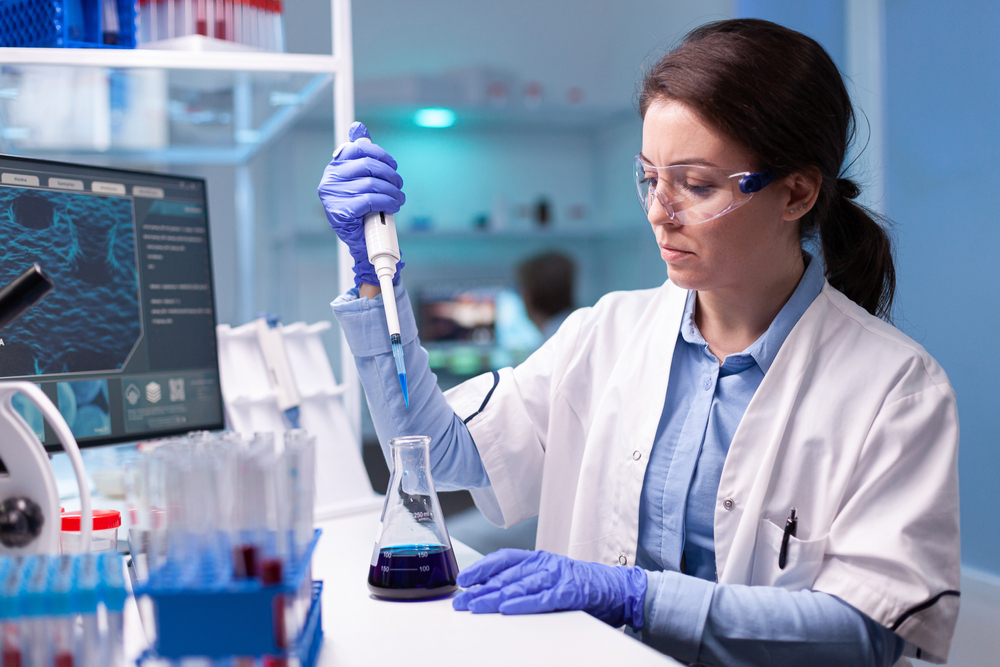Wet Lab: A Comprehensive Guide to the Heart of Scientific Research
Introduction: Understanding the Importance of Wet Labs in Scientific Research
Across the
globe, wet labs play a crucial role in scientific research. Although their name
might be unfamiliar to some, wet labs are where countless groundbreaking
discoveries and innovations come to life. These laboratories are essential for
conducting experiments involving liquids, chemicals, and biological matter. But
what exactly is a wet lab? How do they differ from other types of laboratories?
And what are some of the key techniques and equipment used in these labs? In
this comprehensive guide, we'll explore the world of wet labs, delving into
their importance, the types of experiments they facilitate, and how they
contribute to the advancement of scientific knowledge.
Defining a Wet Lab
A wet lab
is a type of laboratory specifically designed for conducting experiments that
involve the use of liquid chemicals, biological substances, and other materials
that require a controlled environment. Wet labs are commonly found in research
institutions, universities, and industries such as biotechnology, pharmaceuticals,
and environmental science.
The
controlled environment provided by wet labs allows scientists to carry out
experiments with a high degree of accuracy and precision. These laboratories
are equipped with specialized equipment and tools necessary for conducting
various types of scientific research, such as molecular biology, biochemistry,
and chemical analysis.
Wet Lab vs. Dry Lab: What's the Difference?
One of the
main distinctions between wet labs and dry labs is the nature of the experiments
conducted in each. Wet labs involve the use of liquid chemicals, biological
substances, and other materials that need a controlled environment, while dry
labs are focused on computer-based research, mathematical modeling, and data
analysis.
Wet labs
are designed to handle hazardous materials and require specialized equipment,
safety measures, and storage facilities. On the other hand, dry labs do not
typically involve the use of chemicals or biological materials and are
generally considered safer. Both types of labs are essential in scientific
research, with each providing unique insights and knowledge.
Essential Wet Lab Techniques
Scientists
working in wet labs employ a variety of techniques to conduct their
experiments. Some of the most common wet lab techniques include:
- Titration: A technique used to determine
the concentration of a substance in a solution by adding a reagent of
known concentration until a reaction is complete.
- Chromatography: A method used to separate
mixtures of substances into their individual components, based on their
differing affinities for a stationary phase and a mobile phase.
- Spectrophotometry: A technique that
measures the absorbance or transmission of light by a sample, providing
information about the sample's concentration, purity, and other
properties.
- Polymerase Chain Reaction (PCR): A widely
used technique in molecular biology that allows for the amplification of
specific DNA sequences.
- Cell culture: The process of growing
cells under controlled conditions, typically outside their natural
environment.
Key Wet Lab Equipment
To
facilitate these various techniques, wet labs are equipped with a range of
specialized tools and equipment. Some of the most essential wet lab equipment
include:
- Fume hoods: Enclosed workspaces with a
ventilation system designed to protect researchers from hazardous fumes,
vapors, and particles.
- Centrifuges: Devices that use centrifugal
force to separate substances of different densities, such as cells,
proteins, and nucleic acids.
- Pipettes: Instruments used for accurately
transferring and measuring small volumes of liquid.
- Microscopes: Essential tools for
observing cells, tissues, and other biological specimens at high
magnification.
- Incubators: Controlled environments that
maintain optimal conditions for cell growth, such as temperature,
humidity, and gas concentration.
Wet Lab Experiment Examples
The scope
of wet lab experiments is vast, with researchers investigating a wide range of
biological, chemical, and environmental phenomena. Some examples of wet lab
experiments include:
- Investigating the effects of a new drug
on cancer cells.
- Identifying the presence of a specific
gene in a DNA sample.
- Measuring the concentration of pollutants
in water samples.
- Determining the optimal conditions for a
chemical reaction.
- Studying the behavior of enzymes under
different conditions.
Ensuring Safety in Wet Labs
Given the
nature of the materials and processes involved in wet lab research, safety is
of utmost importance. Wet labs must adhere to strict safety guidelines and
protocols, including:
- Proper storage and disposal of chemicals
and biological materials.
- Use of personal protective equipment
(PPE), such as lab coats, gloves, and goggles.
- Regular training and updates on safety
procedures for lab personnel.
- Installation and maintenance of safety
equipment, such as fire extinguishers and eyewash stations.
- Maintaining a clean and organized
workspace to minimize the risk of accidents.
The Future of Wet Lab Research
As technology
continues to advance, the
future of wet lab research will likely see the integration of more
automation and digital tools, such as robotic systems and advanced analytical
instruments. These advancements will not only streamline processes and improve
the accuracy and reproducibility of experiments but also allow for more complex
and interdisciplinary research.
In summary,
wet labs are essential for scientific research, providing a controlled
environment for experiments involving liquids, chemicals, and biological
matter. With their specialized techniques and equipment, wet labs enable
researchers to make groundbreaking discoveries and push the boundaries of human
knowledge. As technology continues to evolve, the future of wet lab research
promises exciting new possibilities for the scientific community and beyond.









0 comments